Hey There!
I'm Reina
I am a full-time traveling registered nurse, fitness enthusiast, and nutrition expert. Every morning I wake up intending to bring awareness of the importance of health and spiritual wellness, especially to the traveling community. At Messy Bun Traveler, we promote travel that allows the traveler to either kick-start, maintain, or enhance a healthy lifestyle. So whether you're someone who travels for business, travels for pleasure, or new to travel and looking for health advice while on the road, this blog is for you!
inspiration
Categories:
health
destinations
fitness
resources
wellness
Privacy & Disclosure
The Messy Bun Traveler is designed to bring you fun stories, destination guides, and healthy travel advice. To help cover the cost of running this site, all posts are sprinkled with hand-selected affiliate links. When you click on one of these links and make a purchase, I will earn a small commission at no additional cost to you. I only accept affiliate links and paid advertisements from brands I believe in, trust and use personally. Thank you for your continued support!
Altitude in Cusco: Guide to Prevent, Treat, & Cope with Altitude Sickness
March 21, 2022
Cusco, Peru, is an ancient city that quite literally takes your breath away.
I flew into the city of Cusco after spending an incredible few days in the Amazon Jungle.
I spent the first half of my Peru trip in Lima and Puerto Maldonado, both low elevations. In an hour, however, I found myself going from only 500 ft above sea level to over a whopping 11,000 ft of Cusco elevation!

Luckily, I prepared for Cusco’s altitude several months prior. I knew Peru had some high elevations, much higher than what I am used to living here in Los Angeles.
I rummaged the internet for hours researching Cusco’s altitude and ways to prepare for altitude sickness while visiting Cusco.

What is Cusco, Peru’s Altitude?
Cusco has an elevation of 3.400 meters (or 11,152 feet). It’s not uncommon for travelers to experience altitude sickness when arriving in this city.
It’s reported that nearly half of the city’s visitors will get altitude sickness symptoms as they acclimate to Cusco’s elevation. In fact, natives call it the city “city of heaven.”
They believe the short bouts of dizziness and vertigo you get on arrival is just the feeling of being closer to the sun god.
How does Cusco’s Altitude Affect Your Body?
When first arriving in Cusco, climbing the two flights of stairs to your hotel room can sometimes feel like you’re running the last leg of a marathon. What the heck is going on?
According to the Cleveland Clinic, altitude sickness happens when there’s a rapid change in air pressure and oxygen levels at high elevations.
The typical person will feel the effects between 6,000 to 8,000 feet. When we don’t give our bodies enough time to adjust, we may have uncomfortable reactions to make up for these changes in the atmosphere.
Even after several preparations, I did feel the impact of Cusco’s elevation. On the first day, my tour group walked around the city, including all the steps of the Qoricancha Temple.
As someone who can run an entire 21K Spartan Race without a hitch, I found myself breathing heavily after only a few flights of stairs. I never got a headache or experienced nausea, but several members of my group did.
I don’t know if I didn’t feel worse because of the preparations I made beforehand or not. I’d like to think they certainly helped.
Symptoms of Altitude Sickness
Altitude sickness in Cusco is common, but it will not affect your travel plans and activities most of the time. Common symptoms of altitude sickness include:
- Headache
- Dizziness or vertigo
- Nausea
- Fatigue
- Decrease in appetite
- Difficulty sleeping
There are varying levels of altitude sickness as well.
Mild Altitude Sickness: You may experience a mild headache and general fatigue, but it shouldn’t interfere with your regular activity if you follow the advice below. Your body will adjust and start to feel normal again within 24-48 hours.
Moderate Altitude Sickness: Your symptoms may begin to interfere with planned activities. Headache may become severe, nausea and even vomiting may occur, and some difficulty with coordination.
Severe Altitude Sickness: You may feel short of breath, even when you’re just sitting down. It can be challenging to get up and walk. You may also feel a mixture of all the other symptoms listed above.
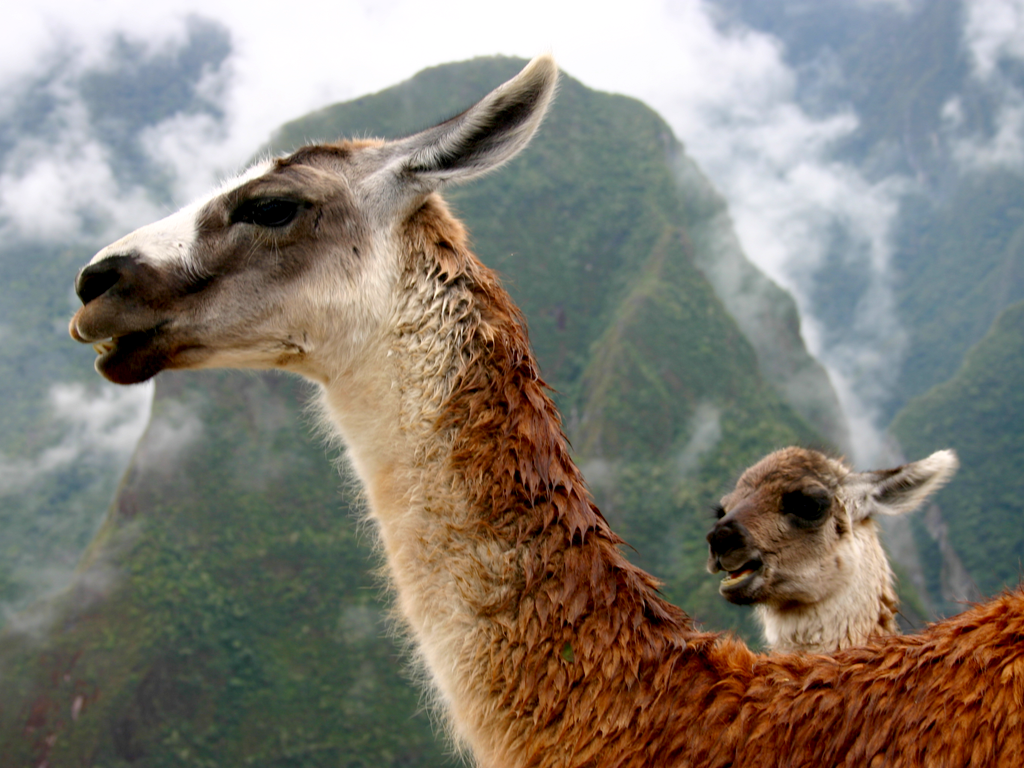
While experiencing altitude sickness is sometimes unavoidable, there are several ways to help prevent, treat, and even cope with it when visiting Cusco’s high elevation.
How to Prevent Altitude Sickness Before Traveling to Cusco:
Get Some Aerobic Exercise
Training your body beforehand by getting moderate aerobic exercise helps. It can increase your body’s aerobic capacity (body’s oxygen consumption), lactic acid tolerance, and oxygen flow to your brain and body.
The more cardio-fit you are, the easier your body will acclimate to different altitudes throughout your trip.
Try a few sessions of aerobic exercise sessions per week. While this has been known to help prevent altitude sickness, being fit isn’t a definitive sign you won’t get altitude sickness while in Cusco.
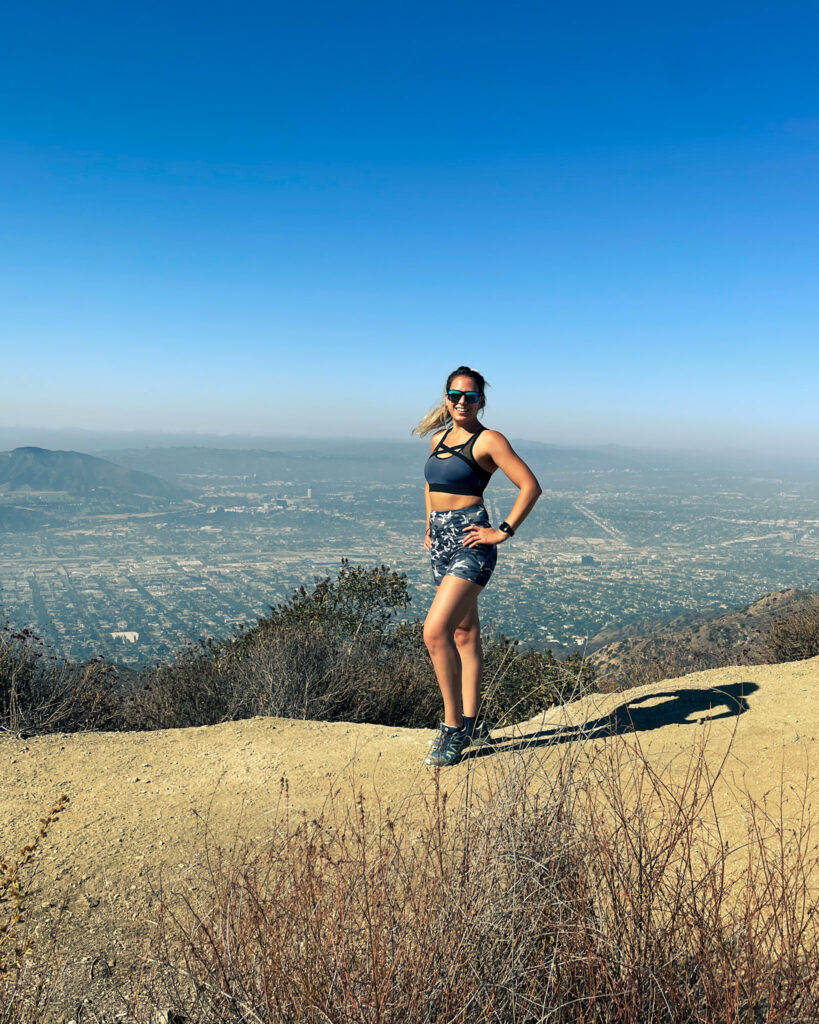
Practiced for Cusco’s elevation by hiking in the Los Angeles Mountains
Visit High Elevation Locations Close to You
If you live at low elevations, try and take a short trip to an area with higher altitudes to practice.

Eat Nutritious Meals
Now is not the time to go on a crash diet. Your body needs fuel!
Learn Yoga Breathing Techniques
When visiting Cusco’s high elevation, it’s easy to feel short of breath at first as your body adjusts. This is a great time to practice good yoga breathing techniques to maximize oxygen consumption and not feel too panicky.
Exhale, take a deep inhale and exhale again. Focusing on the breath can help prevent feelings of altitude sickness.

Take Adaptogens
Adaptogens are various herbs, plants, and mushrooms that help your body adjust to physical or environmental stress. Adaptogens can be found in various foods or taken as a supplement.
I took Go Condition Altitude Support Plus supplements one week prior and even during my trip.
Chlorophyll drops are another popular adaptogen people use to help prevent altitude sickness.
Hydrate
Water consumption is so important! Plan on drinking twice as much water as you usually would.
Plan a Visit with Your Doctor
If you’re really concerned, you can schedule an appointment with your doctor to discuss prevention options.
Your healthcare provider may prescribe you steroids (like dexamethasone) or Diamox. Diamox is a prescription-strength altitude sickness medication meant to take when you start experiencing symptoms.

How to Prevent Altitude Sickness While in Cusco:
Slow Acclimation
Ideally, you’ll take it easy on your first day in Cusco. Start with gentle walks and strolls around the plaza.
See also:
Avoid Alcohol
Alcohol can exacerbate the effects of altitude sickness because it contributes to dehydration. You can also feel drunker quicker and feel the nasty effects of a hangover easier.
See also:

Enjoy Some “Mate de Coca” aka Coca Tea
Coca tea is an everyday staple in Cusco and Machu Picchu as it’s known to help alleviate headaches associated with altitude sickness.
Many hotels will serve this on arrival, and many restaurants will have it on their drink menu. Coca leaves are packed with vitamins and minerals that may help your body feel better in Cusco’s altitude.
See also:
How to Treat Altitude Sickness if You Get It:
Stop and Rest.
Make sure to take it easy. If you start to get dizzy, rest before engaging in any more activity.
Drink More Water.
Remember to stay hydrated!
See also:
Electrolytes
Don’t forget the electrolytes, too. A critical component of preventing altitude sickness while in Cusco is maintaining good electrolyte balance.
Try mineralized drinking water, sports drinks, or plopping an electrolyte tablet in your water bottle.
Tylenol or Ibuprofen
If you have a headache, take over-the-counter medications like Tylenol or ibuprofen.
See also:
Try a Little Caffeine.
According to PubMed, a small cup of tea or coffee can help with headaches associated with altitude sickness.
Many people may tell you to avoid this. But, recent research is showing that the fears of dehydration from caffeine are exaggerated, and caffeine’s effects on blood circulation at high altitudes can actually be beneficial.
Best Ways to Cope with Cusco’s Altitude:
Sometimes, altitude sickness is simply unavoidable. We can do all the things to try and prevent it but may still feel its effects. Here are a couple of ways to cope with Cusco’s altitude if you’re starting to feel a little off.
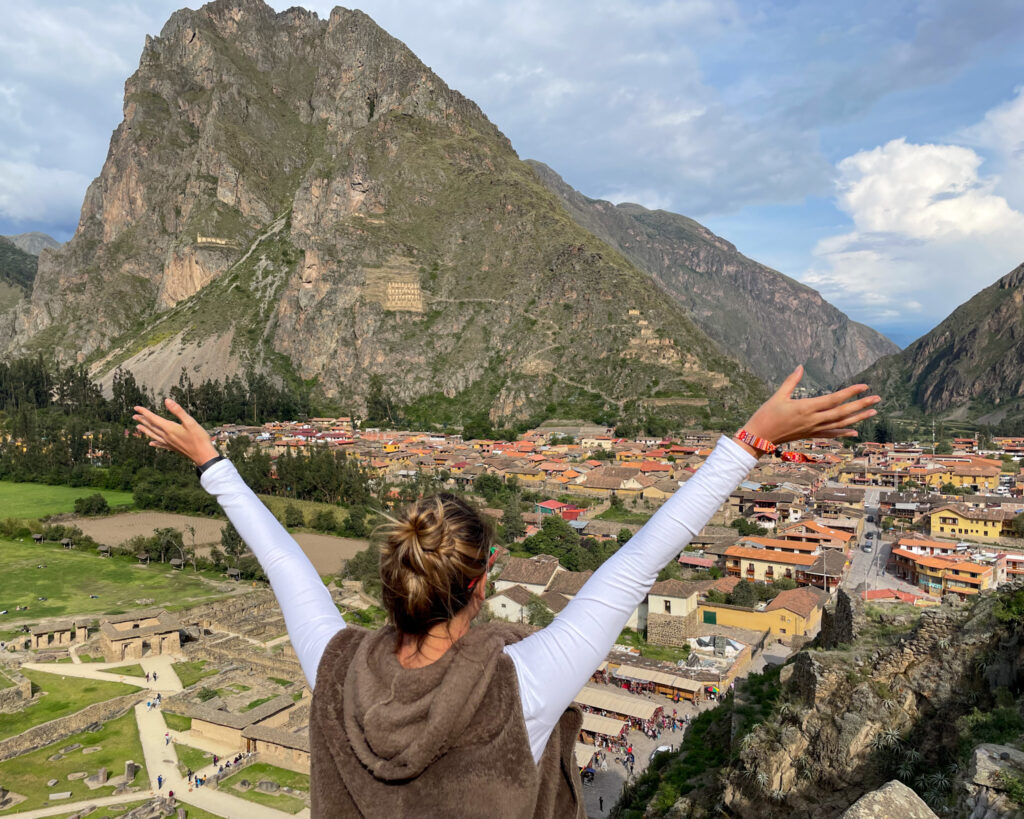
Remember, mind over matter.
Remind yourself that mild feelings of dizziness and shortness of breath are normal when adjusting to new elevations.
Don’t get panicky, as that may exacerbate the problem and make you feel worse. Give your body time to adjust, be patient with yourself.
Know your body.
Recognize if you’re not feeling well and treat yourself accordingly. Don’t ignore it; otherwise, you may start to feel worse later.
You’re in the “city of heaven.” Bouts of dizzy spells or heavy breathing may be unavoidable. Just remember the mantra the locals say: Soroche. The beautiful feeling of being closer to the sun gods.
If you enjoyed this post, PIN ME!
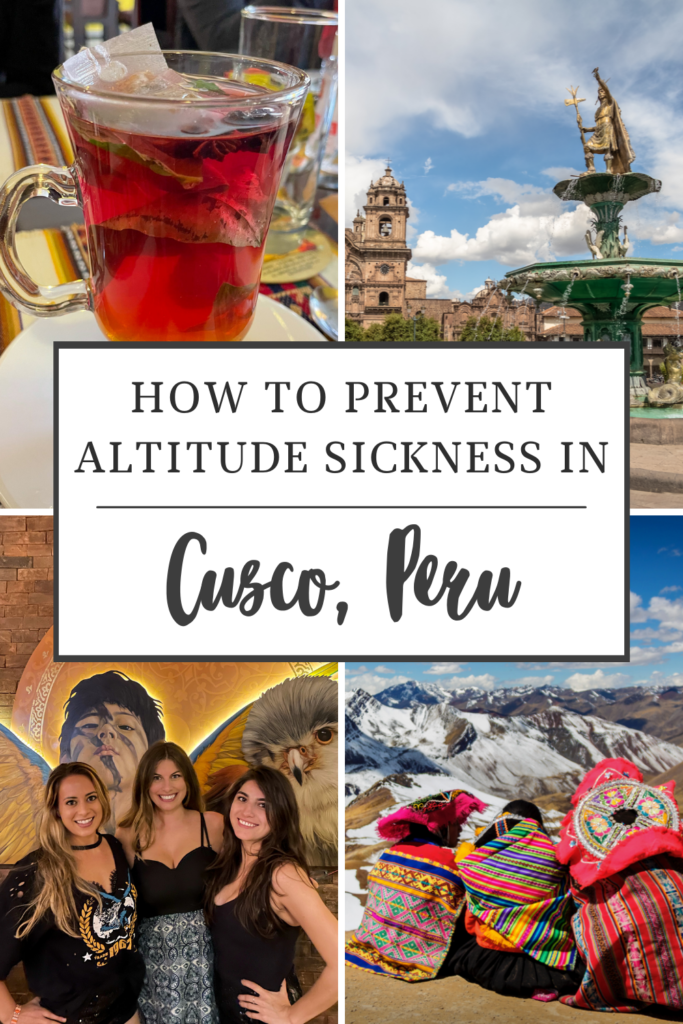
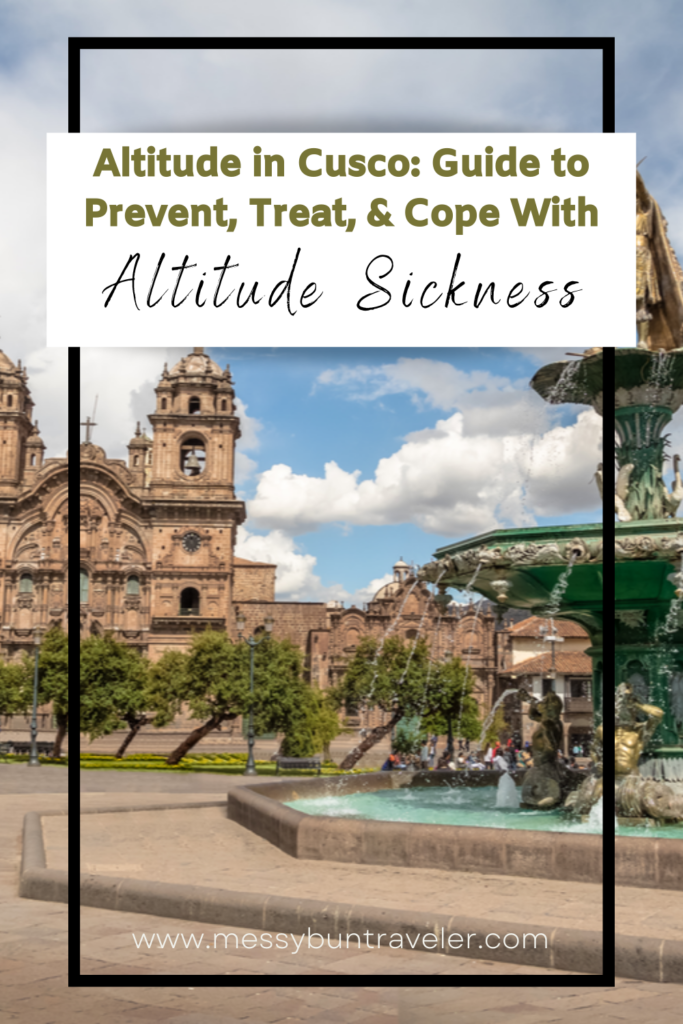
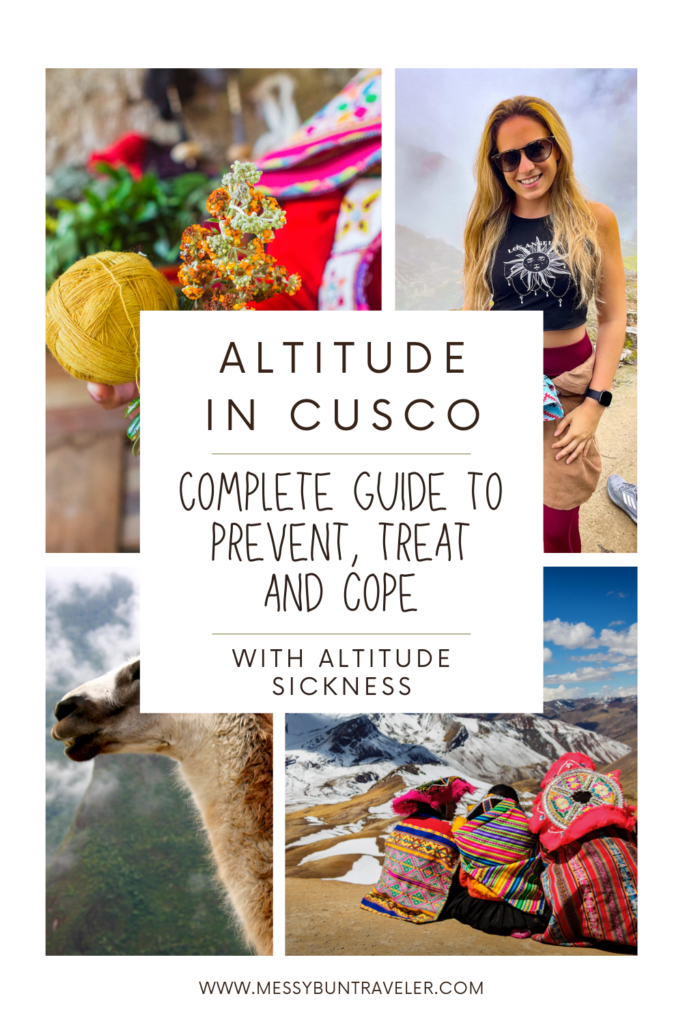
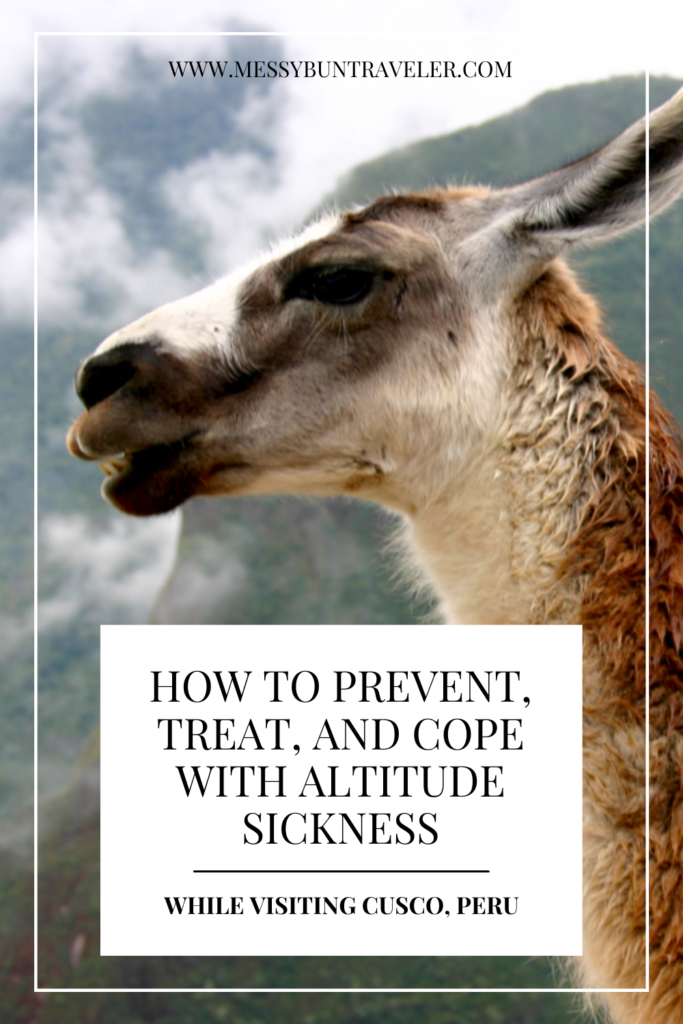
Join my newsletter
* We will never share your details with any third party